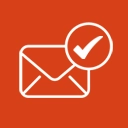How to get company emails and turn them into opportunities?
There are platforms and applications that do this, but they’re not free, let alone cheap.
If you want to collect corporate addresses for free and build a list that actually represents prospects, you’ll have to do a lot of research and collect the data by hand.

Table of contents
Why not buy mailing lists
Purchased mailing lists are built using bots that collect corporate emails such as [cargo@]. This is called “scraped email”, a very serious spamming technique that damages the sender’s reputation.
In a nutshell, the scraped method is used to collect generic emails from the internet, such as sales@; financial@ etc. in order to market bases.
There are unsuspecting people who buy huge lists, made up of generic emails or not.
Purchased bases contain not only generic addresses, but also spamtraps, disposable emails and all kinds of damage to the email marketing sender.
And of course the ISPs’ anti-spam filters block the sender’s domain and IP. Therefore, anyone who sends this type of email is classified as a spammer and can no longer send any type of communication, since their reputation is so bad.
How to get emails from companies to build a healthy list
Before thinking about how to get emails from companies, you need to keep in mind that you need to build a list of healthy contacts.
In other words, leads that are really promising because they are contacts that have something to do with your business and therefore offer a high level of adherence to your communication.
A base free of bounces guarantees a good deliverability rate, since messages manage to reach the recipients’ inbox.
Bases containing at least 3% bounces are classified as spammers and go straight to the spam folder.
Let’s take a look at how to get company emails using the SafetyMails feature.
The “Cat’s Leap”: Accessing the SafetyMails Email Format
To get started, go to this link on the SafetyMails website.
Find the company you want and see which email format is most used.
Go to LinkedIn to find the page of the company you have chosen. Search for the names of people linked to the organization and adapt it to the email format found on the SafetyMails website.
For example: you chose the company Banco Bradesco. The most commonly used email format is First Name+.+Last Name.
Go to LinkedIn and look for the Banco Bradesco page. In the “About” tab, find the size of the company and the number of associated users.
Click on the number of associated users to see their names.
Suppose you met someone called Caio in the Inbox. As you already know that the email format most used by Banco Bradesco is First Name+.+Last Name, Caio’s email is probably [email protected].
Use SafetyMails’ free email verifier to find out if that email is valid or not.
Obtaining company emails for free takes time and patience, because it’s a one-by-one job of collecting individual data.
But the effort is worth it when you manage to create a list of prospects who can actually become leads.
How to get emails from companies and make your B2B campaign work
You’ve collected the emails, accessed SafetyMails’ free email verifier, validated the contacts and set up your list. Your sales have been a success.
After a while (it could be two months or three), you decide to follow up the first campaign with an Up Selling strategy, offering an upgrade of the product or service purchased in the first sale.
You send out the emails and… your list goes into the recipients’ spam folder. Why was the first campaign a success and the second not?
The answer is simple: mailing lists are easily susceptible to obsolescence.
For example: a contact who stops engaging; an email that wasn’t delivered because the recipient’s inbox was full, or if there was a problem with the recipient’s server, or even an email that changed ownership (this happens a lot with corporate emails, due to turnover).
If reasons like these add up to 3% of your list, regardless of how big or small it is, the anti-spam filters will block it.
So before you send your emails, check your list. This will save you a lot of headaches, ensure that your reputation as a sender remains intact and, best of all, that your campaigns are delivered to the inbox.

Conclusion
Getting free emails from companies is a bit of work, but it’s worth it if you want to direct your financial investments to other areas of marketing.
It’s worth remembering that corporate emails (just like any email) fall into obsolescence, putting the health of lists at risk.
For this reason, always checking emails before sending them is essential to the success of any strategy.
FAQ
Why shouldn’t I buy mailing lists?
Buying and selling mailing lists is a spamming technique and is penalized severely by email providers by blocking and blacklisting senders.
In addition, this practice violates the rules of the General Data Protection Law – LGPD – and is liable to fines.
How important is email verification for a corporate mailing list?
An email list becomes obsolete easily, especially corporate emails, which change owners frequently. An employee may take on a new position, move to another branch or even be dismissed from the company. For these reasons, checking emails is essential before sending any campaign.



